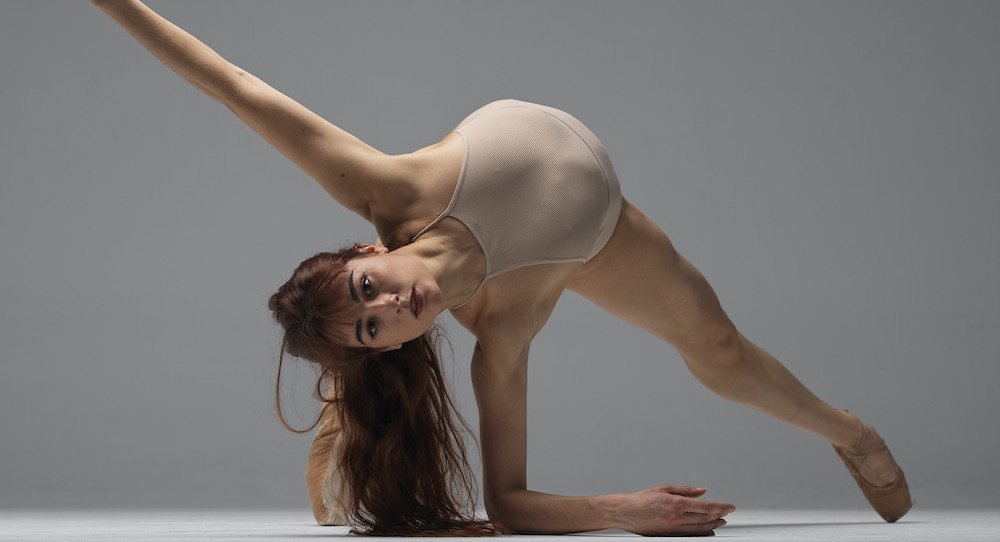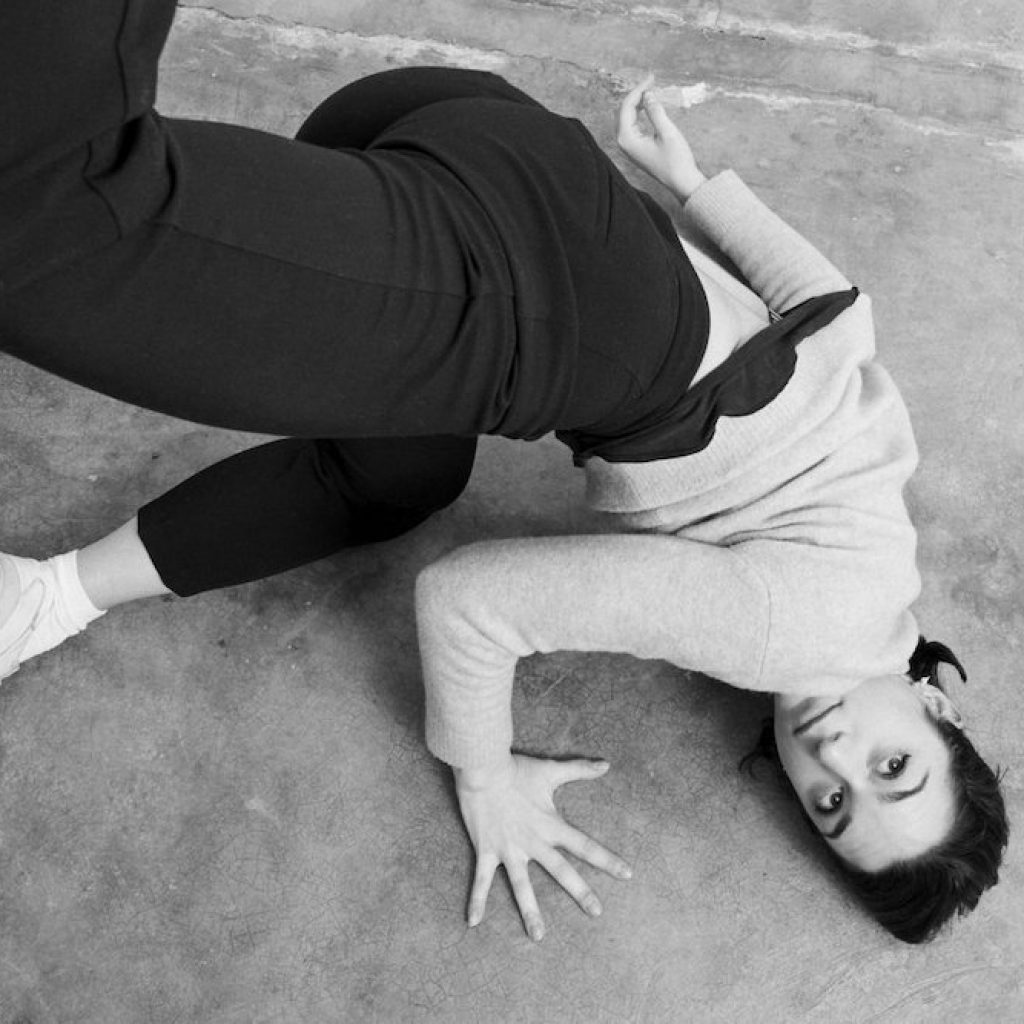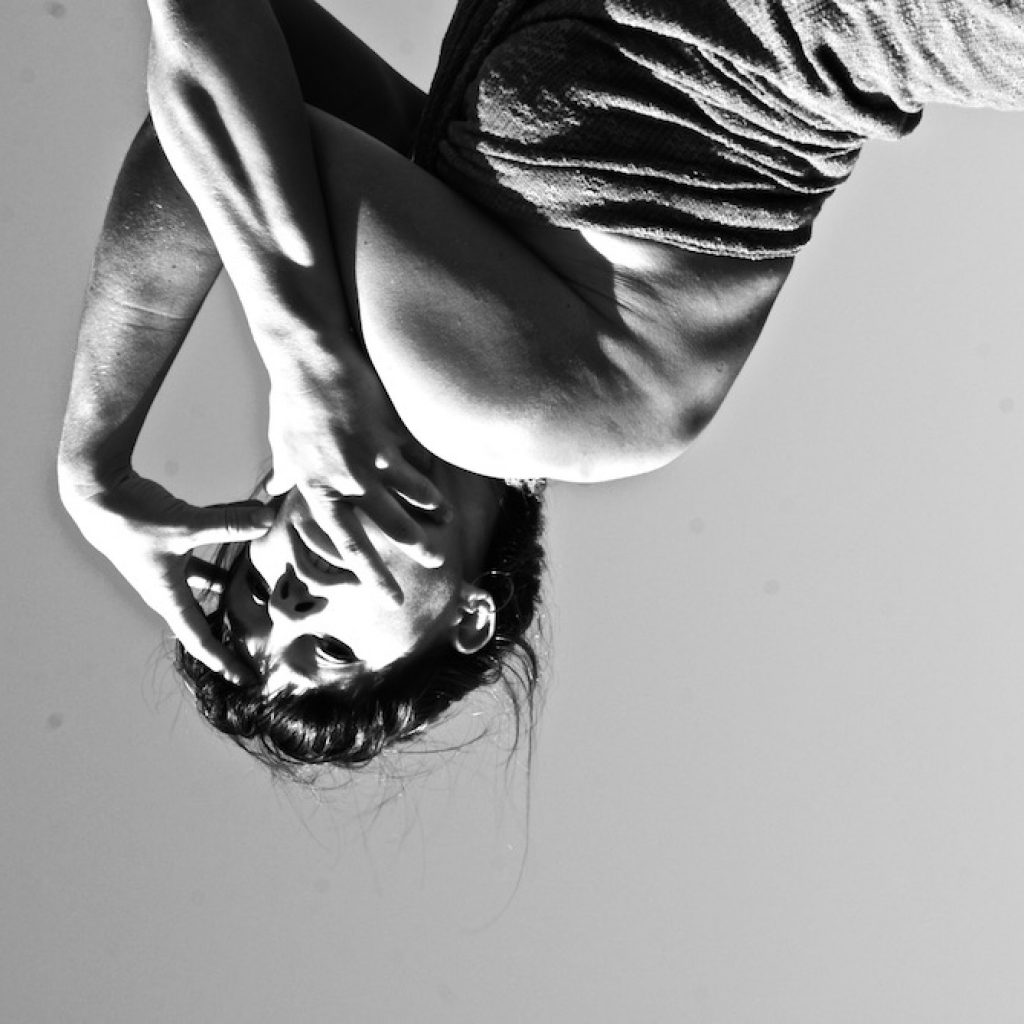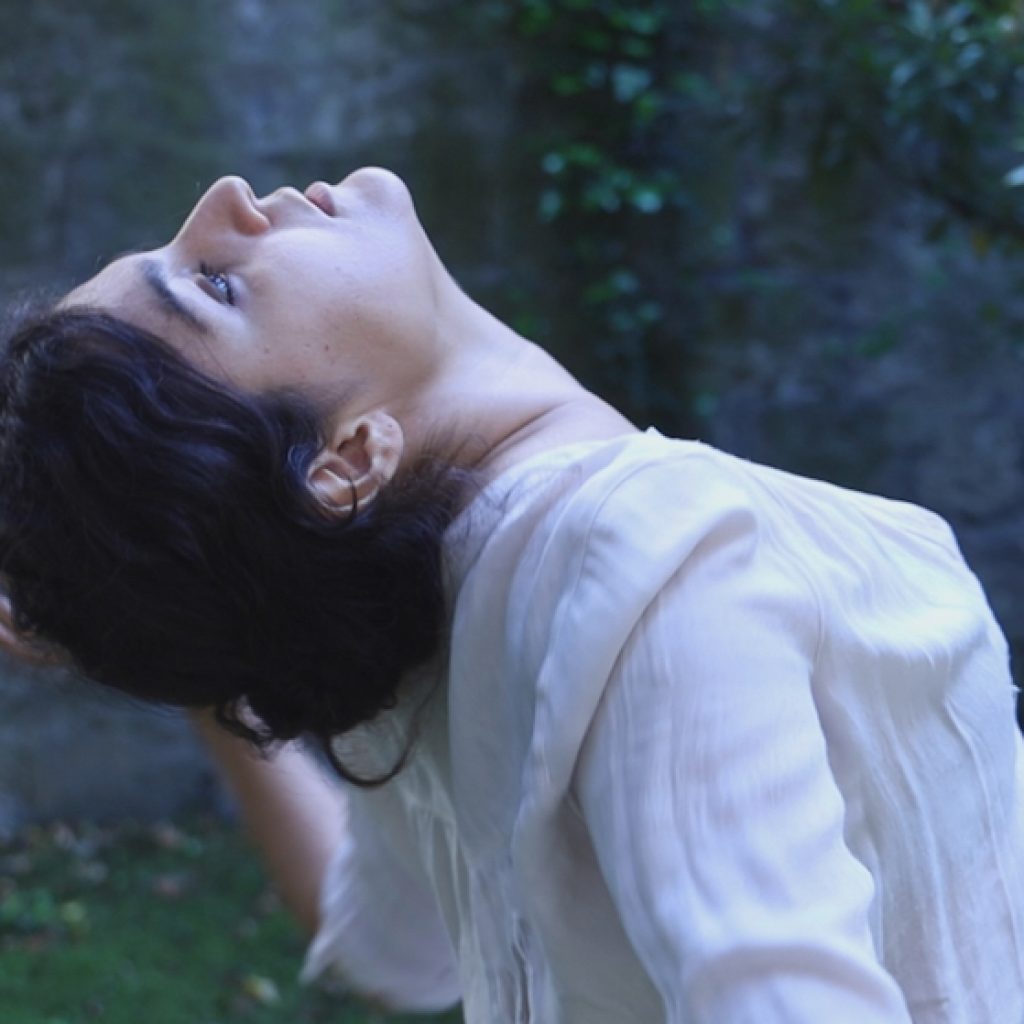As a U.S.-based freelance dancer, I have often wondered about the opportunities and lifestyle of my European counterparts. Interviewing freelancers from France, Italy, Germany and Switzerland gave me a useful glimpse into the European dance world, which in many ways functions quite differently than dance here in the United States. Read on to find out more!
Axelle Chagneau – France
In France, there is a system called intermittence du spectacle, which acts as a form of assured compensation for workers who do not qualify for annual or permanent contracts. Many of these workers are artists. To enter the system, you must earn a certain number of cachet every year, which are each composed of 12 hours. Once you reach 43 cachet, or over 500 hours from the right kinds of contracts (some contracts operate more under the table and don’t earn you cachet), you receive “employment” by the government and are secure for the year. The minimum monthly salary in France is around €1,100, and under the intermittence du spectacle, the government gives artists €1,300 a month even if they don’t work during that month as long as they fulfill their yearly cachet requirement. The government essentially fills in the gap of whatever companies didn’t pay dancers to reach their minimum salary for that month. While this status is initially difficult to access, it gets easier after the first year because dancers are often offered the same contracts the following year, and many companies in France, especially smaller companies, are very loyal. (Bigger companies care less about loyalty and are less likely to renew contracts.) Rehearsals only count toward cachet if they are paid, so for some companies they count, and for others they do not. Outside the government, there is also an association that can help out with things like health insurance as well as grants to attend workshops and pursue learning either in your field or to work toward another job.
Ballet dancers are often able to complete all their hours in three months because they are working every day and paid whenever they work. With contemporary dance, on the other hand, you might only be paid for performances; if you have only three shows in the year, you technically only have three cachet. One flaw of the intermittence du spectacle system is that it makes it very difficult for new companies and choreographers. If a company wants to pay dancers in cachet, it costs more for the company than paying in money because it requires a special license, which is expensive. If you are a dancer in France, you need to be in a big city for classes, auditions, etc. At the end of the day, all the dancers are in the big places –– mainly Paris, but also in other major cities like Bordeaux.
There are 15-20 big companies in France that get a lot of money from the government. Because of that, these companies are required to give jobs to French people. Oftentimes, around 1,000 people apply for an audition, 300 get invited, and of those 300, only one gets a spot. These well funded companies are sometimes required to hold auditions even when they don’t need any new dancers so no one gets hired from the audition. Tiny companies have auditions much more often, and those are the ones you need to hustle for. The smallest, newest companies often employ young dancers who are okay with not getting paid. More established small companies are getting their first grants for tiny productions with two to three dates, and those jobs don’t really enable you to get in enough hours. Then the most successful small companies that have gotten a few years of grants can actually afford a full production.
Axelle Chagneau is currently living in Bordeaux, and traveling a lot to make her hours come together. While smaller towns pay less, they generally pay for amenities so expenses are lower. This year, she is working with several companies at the same time, and she attends 10-15 auditions a year. She is in 1) Paris Opera Ballet, a company she auditioned for and had no previous relationship with; 2) a cabaret company, another job which she secured through an audition; 3) a hip hop company whose choreographer she knew in advance and who saw her perform with another company; 4) Opera de Bordeaux; and 5) a contemporary company in Bordeaux whose choreographer is also her friend. She takes ballet class every day, and if she works a lot can sometimes work to fulfill three contracts in one day. Even though it’s a lot of work, she loves it and claims that this is the beauty of freelance. Chagneau never gets bored because she is exposed to a variety of styles and artistic ideas. Her contracts usually only cover a short period of time, and the longer ones last around three months with some form of engagement every day. She says that working with certain higher profile companies allows her to also do work that is unpaid, and that dancers get into small and medium sized companies more often by networking than by auditions, while working for large companies requires attending more open calls.
Note: During the COVID lockdown, every dancer was paid for two years without having to build cachet because they couldn’t work.
Lauriane Nabet – USA
I also spoke with Lauriane Nabet, a French dancer who has been based in New York City for the last few years. She notes a few differences between French and American freelance culture.
“The freelance world of New York has less of a sense of loyalty, and, as a result, you are always hustling, always working on your network,” she explains. “In France, you do that more at the beginning of your career, but then it gets easier. There are more tiny projects happening in New York, though, more opportunities to build your CV and a wider variety of things to do even if most of those things are unpaid. In France, even when you attend open calls, it often feels like things are decided in advance; companies already know exactly who they want to hire thanks to the strong network that some dancers and choreographers have. It’s hard to know how to break into that network, and people are a lot less chatty than they are in NYC, so nobody shares that kind of information. I also feel that the NYC community is less judgemental; in France, it’s more about fitting in the box, trying to match the choreographer’s vision exactly, even though in most cases (unlike in NYC), companies don’t specify exactly what they’re looking for when they hold an open call.”
Nabet continues, “France also strikes me as much more closed than other countries in Europe. There are a lot of rules and regulations, which can be difficult to manage. For example, dancers who have passed the EAT (examen d’aptitude technique, which is a practice exam taken while pursuing a diplôme d’État, a demanding degree that is not even recognized in other countries) are often seen as more valuable even though the test is not directly related to being a good performer. French employers often place a lot of emphasis on a dancer’s level of academic studies even though the work is usually not academic at all. I think this is because French society seeks comfort in rules and levels, tangible reference points that give them a sense of control. New York doesn’t seem to operate with the same level of rigidity. At least this is how I felt five years ago. Maybe things have changed since I left, but I do know that NYC’s dance environment is a better fit for me and helps me feel more free.”
Nabet is currently dancing with 1) Reaction Dance Company, a hip hop and Bollywood company she joined via an open call audition; 2) Lyoness Dance Company, a cabaret/burlesque company whose open call someone referred her to; 3) Borne Dance Company, a contemporary company she joined via an open call; 4) Reza Farkhondeh, a painter who works with dancers doing improvisatory contemporary dance (someone referred her to take a last-minute spot three days before the show); and several event companies for gigs like weddings and parties.
Giorgia Lolli – Italy
Giorgia Lolli is working as both a dancer and choreographer in Italy and abroad. As a choreographer in Italy, you are able to apply to the government’s Ministry of Culture for funding after being established in a collective or company for three years. (Individuals can’t apply for funding from public funding bodies directly unless they have a company. Another option is to get funded residencies through festivals and production houses.) You have to prove that you’ve made a certain number of productions, employed a certain number of people and had a certain number of performances, and they calculate how much money you get based on how much work you do. Funding is not merit-based but instead decided by how much you produce, which forces people to constantly be making new works. There is also a push to employ young people under 35.
One perk of the European dance world is that traveling between countries is easy (although it has been complicated by COVID). This is especially the case for countries in central Europe like Germany and Italy, and less true for northern European countries like Finland. The best cities to be situated in are Amsterdam, Berlin, and London (although it’s a bit more difficult with Brexit because you now need a Visa), but it’s also possible to live outside big cities because of how easy it is to travel. Furthermore, many of the best dance schools are European so there are ample opportunities to study under great teachers and choreographers. Bachelor’s degrees and postgraduate performance companies offer many helpful professional connections.
“Freelance dancers are pretty much at the bottom of the pyramid,” Lolli says. “As a dancer, I used to attend a lot of auditions listed on big websites like Dancing Opportunities and au-di-tions.com. This tactic didn’t work because I didn’t know the work of the people I wanted to work with. I’ve since changed directions because I don’t think attending these auditions are sustainable for the environment or for my mental, physical and emotional health. Now, I work on getting jobs through connections, sending direct emails and so on. The scene in Italy is very conceptual, and the artist is seen as an intellectual, but I prefer more body work and physicality on stage. It used to be that you had to go to certain places in Europe for specific types of work, but now things are more fluid and spread out everywhere. Countries like Germany, Switzerland, and Finland have more money, while Italy, Spain, and Portugal are more like the underdogs of dance.”
Lolli continues, “In Italy, you get more ‘points’ in the Ministry ranking if you perform in places where there are less cultural opportunities (like Sicily, for example). Each region has its own regional network, and by getting in touch with these networks, you can gain performance opportunities. I got into the national network this year, which offers a salary of €50 a day after taxes for rehearsal and performance days. Artists are guaranteed minimum wage while working and can also apply for private foundations and other funding. Websites like On the Move offer fellowships for makers and mobility grants, and there are also competitions that help artists gain more visibility and are slightly more commercial. These are helpful if you want to be a repertoire choreographer.”
Mareike Jung – Germany
How do you find the dance and arts scene in Berlin? Is it highly competitive, or is there enough work to go around?
“I’ve been living in Berlin for 11 years, and doing my physical theater education here helped a lot. It gave me a starting point to get into the dance scene, and having a background somewhat outside of dance has worked in my favor as a unique selling point. Berlin’s independent scene is incredibly diverse, and I appreciate the unspoken expectation for artistic works to deal with socio-critical topics. The dance scene is super competitive, and meeting dance colleagues who brought me into it was instrumental. In Berlin, you not only need to be a hard worker, but you need to be willing to get to know people so you can start getting direct recommendations. To achieve success in the field, you need to work with known artists or big theaters or just get very lucky. If you apply for funding, you might apply 30 times before your application is successful. Once you get your first funding opportunity, however, you can start to bring in larger grants, and it’s much easier to earn money once you are established. So many dancers move to Berlin and are lost for years because there are lots of great dancers here. Salaries are low for dancers because if someone says no to low pay, there will be 50 others who will do the job for free.”
Do you attend auditions?
“I don’t go to auditions. I don’t feel comfortable with the elbow-each-other attitude and the need to prove myself in one hour. I’ve gone to some auditions for fun and to learn how they are functioning, but I really don’t like them. For my job with the Philharmonie, someone recommended me and then I was invited to a personalized audition, after which I got the job. Because of that job, I got a recommendation to coach the main actress of a movie (by an award-winning director) in dance. I know people who go for so many more auditions than me and get so much less. In my career, I’ve been fortunate to have taken some important steps on bigger stages, which makes my portfolio look professional and helps my chances at securing more jobs.”
How does the creative process generally function for you?
“I’ve had very good experiences with project-based work that occurs within a limited time frame. For my recent solo work, I had a block of two weeks and a block of three weeks for rehearsals. Of course, I was thinking in between, but what works well for me and what I see here in the scene is intensive time periods of working every day that enable you to delve further into the research. The frustration is less because you’re really in it and involved. It is also easier on your schedule because you can plan around the whole thing in advance rather than having to take time here and there to create your work.”
Can you talk a little bit about the overlaps between dance and physical theater?
“My ‘physical illusion’ company, inback, is steady income for me and pays throughout the year, but it also entails a lot of unpaid work. When you really break it down, it’s very little pay per hour. Right now, it makes up a third of my yearly income; I could push it more by touring more often, but that is not what I want. I’ve learned a lot from running my company about things like client communications, technical riders, production and what’s necessary to look professional, and what I’ve learned through inback translates into the dance scene. As a freelancer, I fill many different roles; sometimes I perform and choreograph, sometimes I am a choreographic assistant, and sometimes I direct and work with a dramaturg. I’ve done some commercial work in the past, but I’m now working mainly in the freelance scene.”
Is it easy to travel and work across Europe? What about outside the EU?
“I’ve toured extensively with inback; we almost never perform in Berlin because the market is oversaturated and so many people are willing to perform for free. I produce my work in Berlin and then take it on tour, and it’s possible to find festivals in places like the Netherlands and China. Traveling around Europe by car or train is easy and taxes and Visas are also made simple by being a member of the EU. It’s harder to travel with a full length show that incorporates a lot of props and set pieces because then you need a theater and a technician. Usually, we tour pieces that are around 20 minutes long, and we perform them around three times per festival.”
Is there any government support for freelance artists in Germany?
“Künstlersozialkasse or KSK is a social insurance fund for artists. You start by calculating what you’ll earn for the year in the arts. If you say, for example, ‘I will earn $15,000 this year,’ then KSK will calculate how much you need to pay in every month. It might be something like €100. Then they pay your health insurance, which would usually cost much more than that. When you retire they also give you money for retirement and other benefits as though you had a ‘normal job.’ The more you produce your own art, the more funding you are eligible for. If you get one funding opportunity, then you are more likely to get the next. Doing your own work also makes it more likely that you’ll get to work with other people.
Here is a breakdown of government funding that I found online: ‘The Senate’s cultural administration supports Berlin’s cultural landscape with around 600 million euros (as of 2020) per year. About 95 percent of the budget goes to over 70 permanently institutionally funded cultural institutions. Around five percent is spent on individual and project funding.’ While cultural funding could be distributed more fairly and there are other issues with the arts scene in Berlin, I think that, overall, German artists are lucky because there are many opportunities when compared with other countries.”
Léna Bagutti – Switzerland
What is it like to be a freelancer in Switzerland? Is there any government support?
“Unfortunately, in Switzerland, we still don’t have the ‘artist status’ like in Belgium or France. Half of the people I know who work in the arts are freelancers while the other half are unemployed, which means that when they don’t have work, they receive help from the government. This gives a sense of security for sure, which freelancers don’t have, but our status as artists is not officially recognized, so we have to be registered for ‘normal’ unemployment, which is not really adapted to an artist’s lifestyle.
There are many easily accessible associations for contemporary dance in Switzerland that provide a lot of information to artists and can direct you if you have questions about contracts, freelancing or building your own company, which is very helpful. Because Switzerland is not packed with people in the same way that many other countries are, there is plenty of room to make your own projects and if you know where to find money, there is money available. It doesn’t rain from the sky, but if you learn how to present your work and who to ask for help, then you can find money. It is a full-time job, though, and takes up time that could otherwise be spent in the studio.”
How do you get most of your jobs? Do you attend auditions or is it more about networking?
“I think I can say that, in general, it is more about networking. Of course, it takes a lot of effort to build your network, and going to auditions is one part of that process. I have applied for auditions and gotten some of my jobs that way, but once your network is built and you’ve already been hired for some jobs, they tend to present themselves to you much more easily. People call you back or they recommend you to someone. I have the impression that the big fight to enter into the professional dance world is at the beginning of your career.
I still attend auditions, even if it is sometimes a frustrating experience. But I think it’s important to see the audition not only as a process where choreographers select dancers, but also as a way to get to know another approach to movement and to evaluate whether you want to work with that choreographer or not. It is also a way of learning more about what you are searching for as a dancer, and a good way to meet people. I often run into colleagues I met during my years of education, and I enjoy these encounters. While I can’t say that I enjoy auditions themselves, they help me to maintain a certain dynamic with myself and throw me out of my comfort zone. They also encourage me to learn about new companies.”
What are most of your contracts like? Do projects generally last a short or long time?
“It depends on the nature of the job. Generally, if it’s a creation process followed by a premiere in a theater, it lasts five to six weeks. Then there are maybe three dates of performances, and if other theaters buy the show, it can be followed by a tour. I’ve noticed that the shows that are able to tour after the premiere are the ones that can be performed in different places and settings and for different audiences. For example, in the street, maybe in a shorter format, or shows that were imagined to be performed in various locations like museums or night clubs. There are so many possibilities.
I think six weeks of creation is actually a very short time to enter a deep process of work, especially if the group of performers/dancers are meeting for the first time. When time is limited, the tendency is to take a safe path that will lead to a secure final product, and I personally think that this is not much of a creation process. I do think deadlines are important and useful, but it’s a pity if they don’t allow you to really dive into the surprises that creativity can bring. The problem is that companies do not receive enough subsidies to pay everybody for a longer period of time.
This is how the typical contract works, but I’ve had other jobs that were even shorter. Five days. Eight days. For one project, we met one weekend per month over the course of a year. The truth is that there are no rules for the perfect creation process, and sometimes not having enough time can bring about amazing encounters. I had a job for five days in Zürich with a Brussels-based Italian choreographer, and the experience was amazing because the group understood each other very quickly.”
By Charly Santagado of Dance Informa.



















